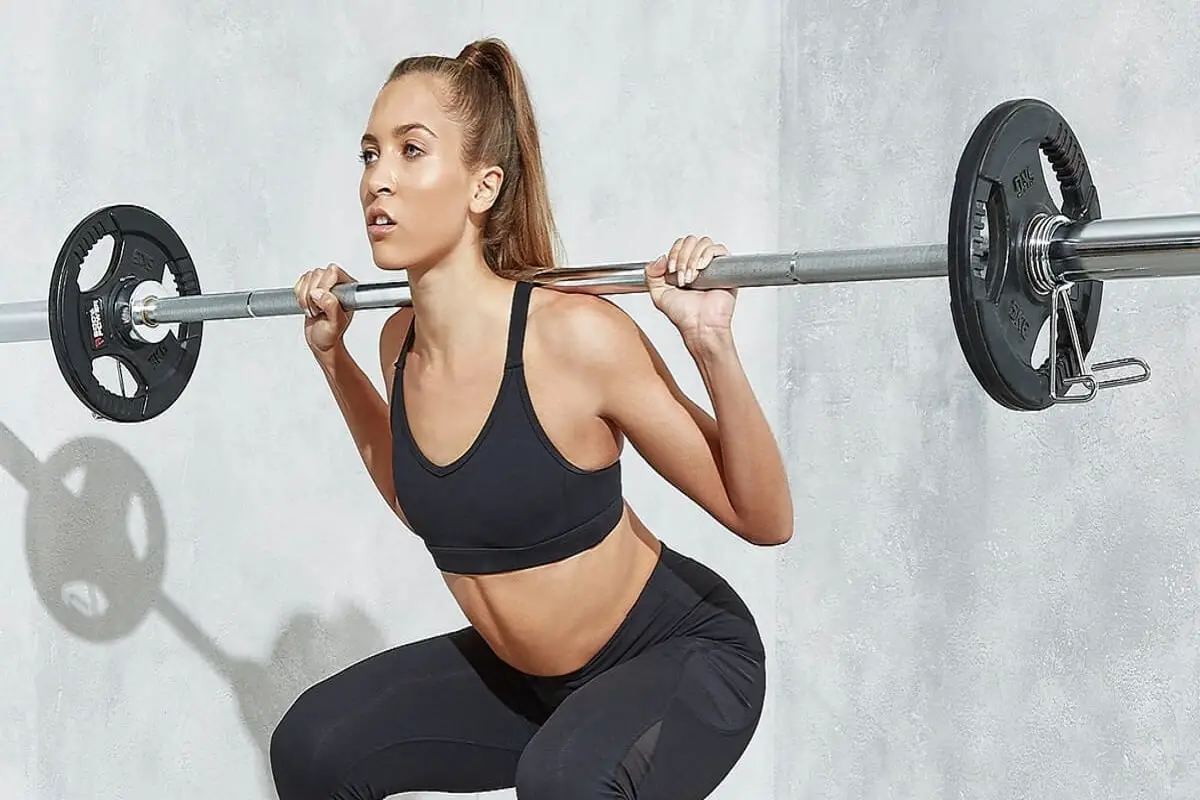Weight Lifting for Women: What Every Women Should Know?

Women shouldn’t be afraid of the weight room. Female fitness models and athletes have made it cool to hit the weights, but many women still feel intimidated by free weights or fear they will bulk up if they lift too much. While there are certainly benefits to lifting lighter weights for higher reps, research shows that lifting heavier is more effective for building muscle mass—and that’s what most people want when they step into the gym. Know more about weight lifting for women.
Healthy bones
Lifting weight can help you maintain bone density even if you are at risk of osteoporosis. Osteoporosis causes bones to become more brittle and easier to break. It affects more than 200 million people worldwide, with women at a higher risk than men. Risk factors for osteoporosis include age (after menopause), smoking, and inactivity.
Most importantly, weight lifting improves balance, coordination, and posture. These are all very important factors in preventing falls and fractures later in life.
Has a positive effect on your heart!
And weight training is good for your heart too. It improves blood flow to the heart muscle, which helps lower blood pressure, improves cholesterol levels, and strengthens the heart’s ability to pump blood around the body.
Brain power!
It’s also good for your brain. Weight training has been shown to increase cognitive function and improve memory in older people. It can even help to prevent the onset of dementia!
Fights off diabetes & other diseases.
Weight training can help prevent and treat diabetes by improving your body’s ability to use insulin. It also helps reduce high blood pressure, which is important for people with diabetes because high blood pressure can make it harder for them to control their disease.
Muscles burn fat.
Building muscle helps you build up strength, which in turn makes it easier for your body to burn fat instead of store it! The more muscle mass you have on your body, the more calories you burn at rest—even when sleeping! If you’re trying to lose weight or if you want to maintain a healthy body mass index (BMI), building muscle is key.
Makes you look and feel wonderful!
You may be surprised to learn that lifting weights can actually boost your mood and improve your sleep quality. A study from the journal Medicine & Science in Sports & Exercise found that weight training improved mood and sleep quality in women with symptoms of depression, while another study found that strength training helped reduce stress in women with stress-related insomnia.
Increases energy levels and stamina.
Exercise helps you get more oxygen to the muscles, which increases the amount of energy they produce. Your body will be able to do more and feel less tired during the day.
Helps you do your daily tasks more easily.
Lifting weights can help with everyday activities like carrying groceries, moving furniture around the house, picking up children off the ground and putting them in their car seats or strollers, and carrying bags of laundry downstairs. There are many ways lifting weights can benefit women in their daily lives!
Weight Training For Women Myths
It is time to debunk the weight-lifting myths for women. There are all sorts of myths about weight training, especially for women. We’ve busted some of the most common ones below:
Myth #1: Weight training will make women bulky and masculine.
This is a common myth, but it’s simply not true! Women have much less testosterone than men, meaning their bodies will not respond the same way to weight training. It takes time (and, more importantly, hard work) for women to build significant muscle mass—especially if they’re starting out with weight training.
Myth #2: Women should focus on cardio instead of weight training.
Many people believe that cardio is the best way to get leaner and healthier—but this isn’t necessarily the case. Cardio helps with fat loss, but it won’t help you build muscle mass as resistance training can. In fact, research has shown that combining both resistance training and cardio may be more effective than either one of them alone when it comes to losing fat and gaining muscle mass!
Myth #3: Lifting weight is dangerous for women.
Lifting weight is one of the safest methods of exercise—especially if you’re doing it properly. In fact, research shows that women who strength train regularly are less likely to suffer from injuries than those who don’t incorporate strength training into their lives at all!
Frequently Asked Question About (FAQs) Weight Lifting for Women
How to get started with lifting weights?
If you don’t know where to start, you can always talk to a trainer at your gym. They’ll help you create an exercise plan that works for your body and fitness goals! If there isn’t a gym near you or a trainer, there are plenty of online resources available. Make sure that whatever program you decide to do, includes compound exercises (like squats and deadlifts), as they’re the best way to build muscle and strength in women.
When shouldn’t you do free weights training?
If you have a severe injury or medical condition, talk to your doctor before starting any weightlifting program. Women in the first trimester of pregnancy should not use free weights because it can put pressure on the uterus. If you have osteoporosis, avoid lifting weights that are too heavy for you.
What gears do I need?
There are many ways to lift weights, but free weights and machines are the two most common types. Free weights are typically dumbbells or barbells that you hold while doing exercises. I’m a big fan of the kettlebell.
Kettlebells are great because they’re versatile, easy to use, and offer a wide range of benefits. They can be used for exercises that build explosive power, increase endurance, improve balance and coordination and help you lose weight. If you don’t have access to kettlebells, dumbbells are the next best thing. Machines are also an option—they’re convenient but can limit your movement options compared to free weights.
Kettlebell workouts are a great option if you don’t have access to a gym. But if you do have access to a gym, use it!
The more equipment you have access to, the more variety you’ll have in your workouts. And variety is key when it comes to keeping things interesting and seeing results.
What to do if I feel intimidated going to the gym?
It’s normal to feel intimidated when first starting out. However, as you become more comfortable and familiar with the gym environment, your confidence will increase. Start out by taking classes at your gym that is designed for beginners or those who are new to weight training. These classes can help teach you proper form and technique while also providing motivation and accountability. Also, consider working with a personal trainer in order to learn the basics of weightlifting safely.
How much weight should I lift?
There are many ways to lift weights. If you are not used to lifting weights, I suggest choosing a goal that is not too far out of reach. This helps keep you motivated and will prevent discouragement from setting in if results are not seen immediately.
A good guideline is to start with a weight that can be lifted 8-12 times. Work your way up to heavier weights over time by adding more weight or doing more repetitions of each exercise.
You shouldn’t feel pain or discomfort while lifting weights. If you do, stop what you’re doing and talk to a doctor or physical therapist.
How often should I lift weights?
It is important to lift weights at least two to three times a week. The more often you lift weights, the better results you will see. If you only have the time for one workout during the week, make sure it’s on a day when no other activities are planned.
Should I skip a workout if I’m sore?
No. Soreness is part of the process, and it will go away after a few days. If you’re feeling too sore to do your usual workout or if your pain lasts more than two days after exercising, then stop working out until the soreness goes away.
Can I get injured lifting weights?
Yes. It’s possible to get injured while lifting weights, but it’s also easy to avoid these injuries. The most common types of weightlifting injuries include strains and tears in the muscle, ligament damage, and joint dislocations. To prevent injuries, warm up before lifting weights—even if you’re just doing a few reps with no intention of breaking any records. Also, remember to stretch when you’re finished lifting so your muscles don’t tighten up during the cool-down period.
How long does it take to see a noticeable change?
It can take up to six weeks to see any significant changes in your body. It may take longer if you have not been active or lifting weights regularly.
Should I take supplements?
While supplements are unnecessary, they can help you reach your fitness goals faster. Supplements help fill in the gaps that may be missing from your diet or provide additional nutrients that cannot be found in food sources. Supplements should only be used as a complement to a healthy diet and exercise routine.
Also Read:
Does a Breast Pump Burn Calories?
Healthy Indian Food for Weight Loss





